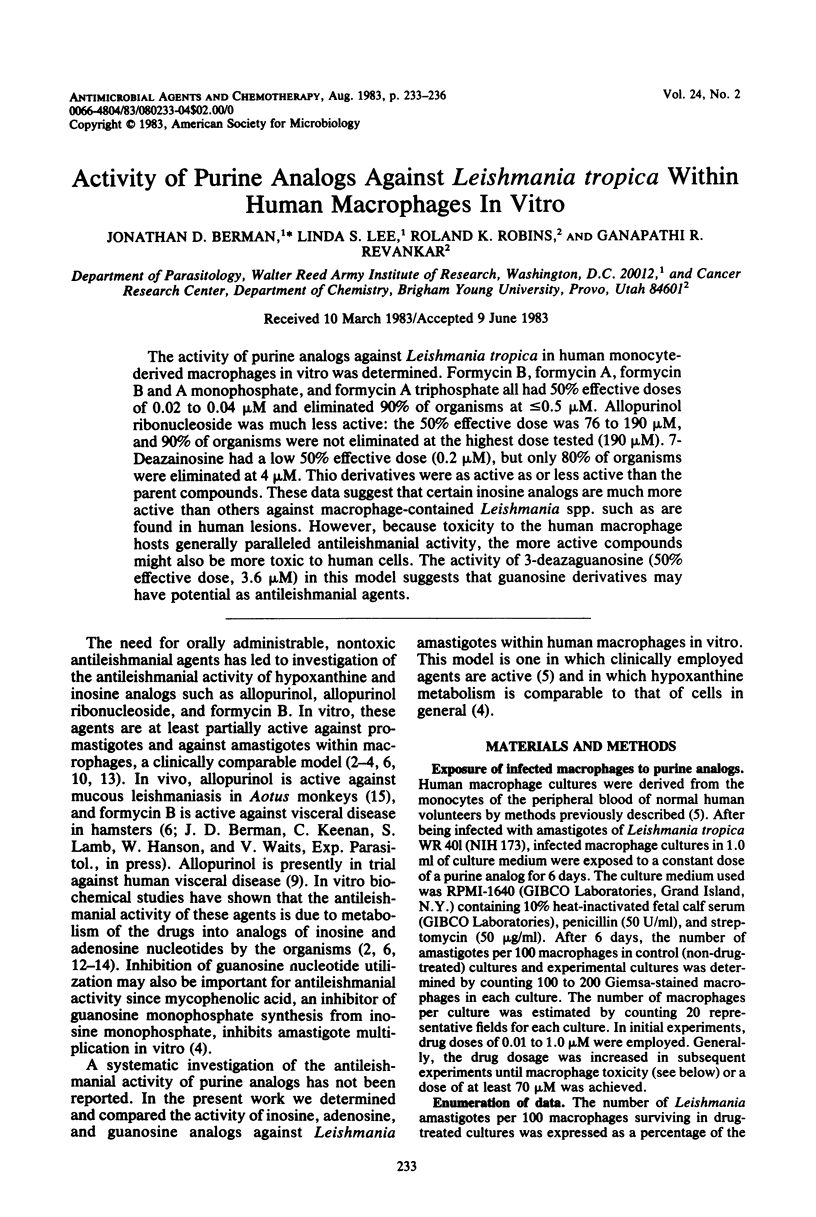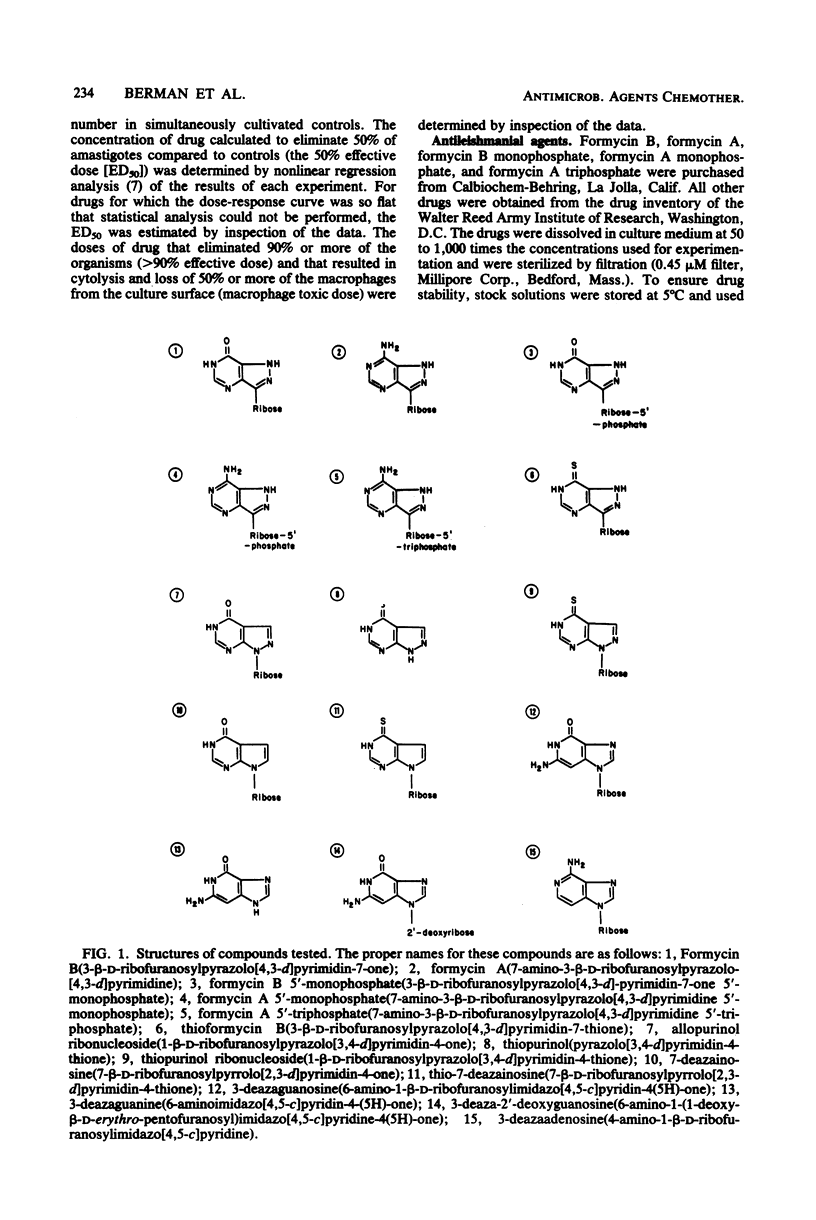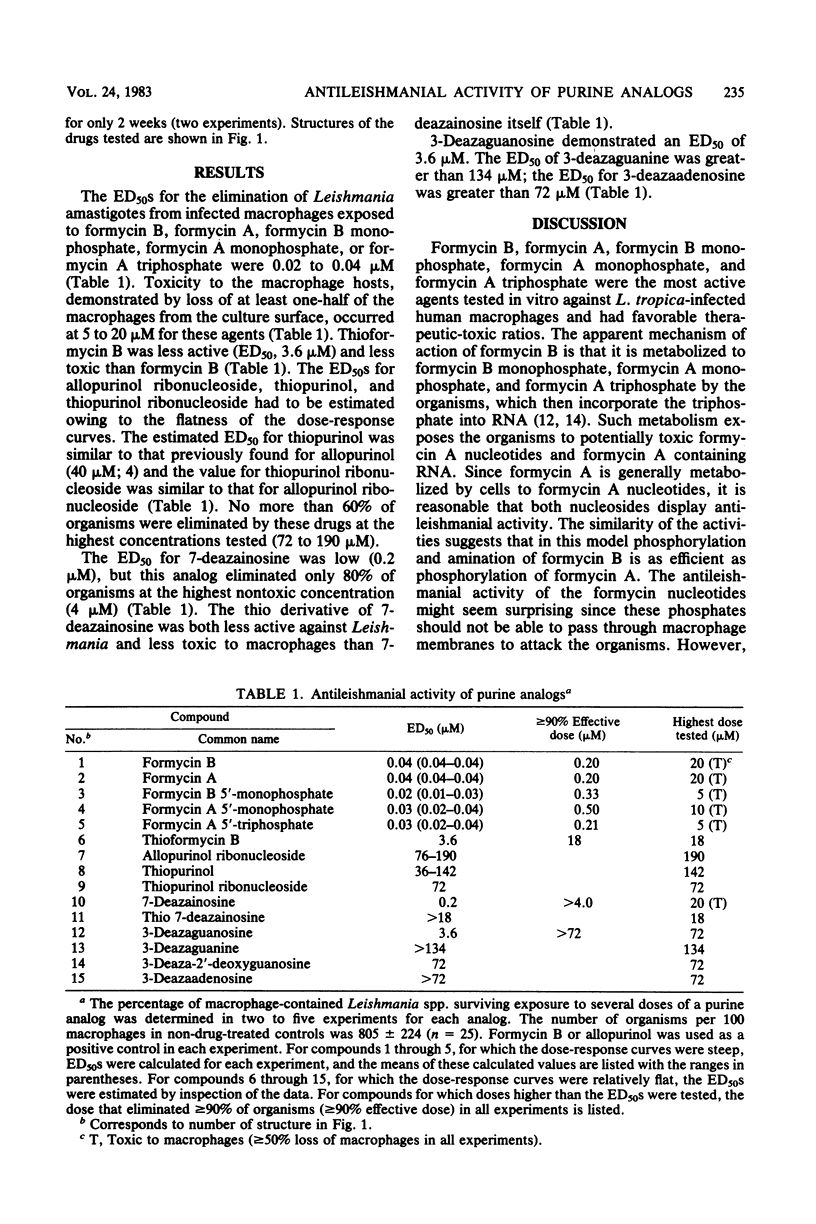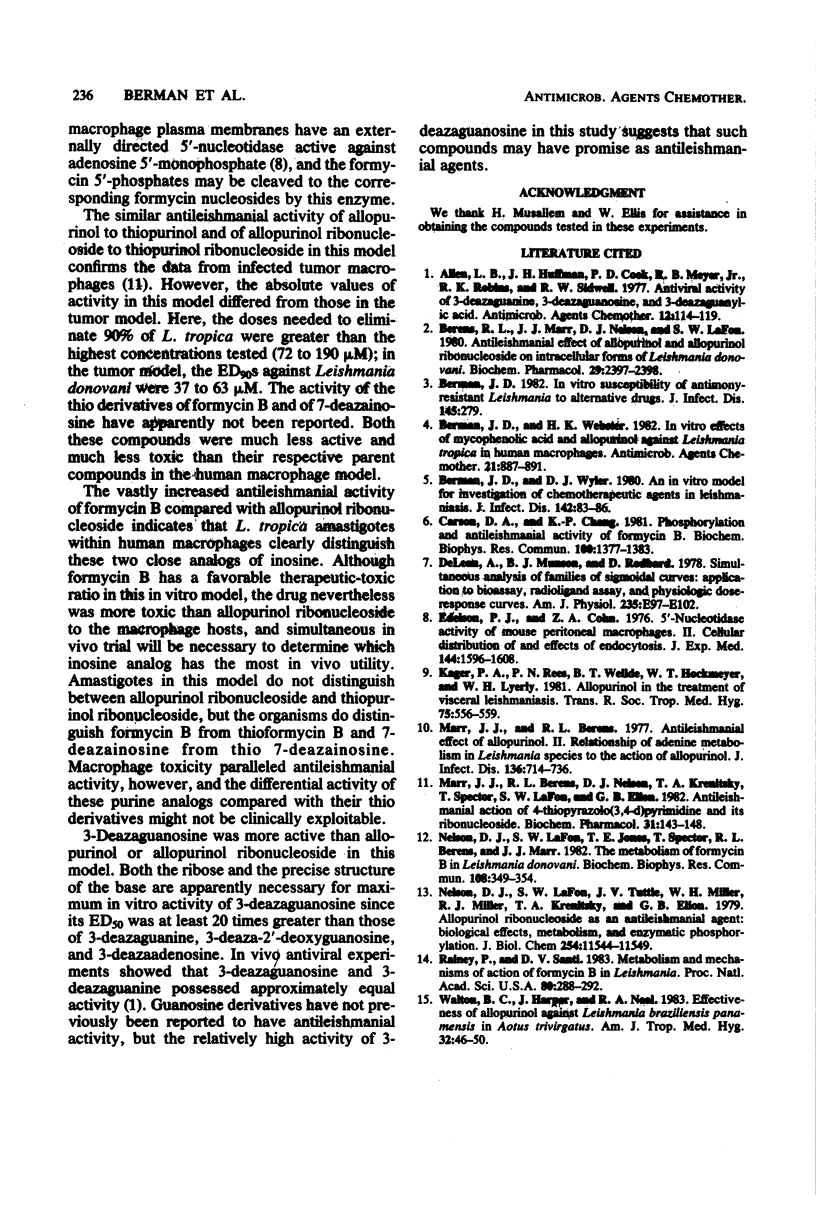Abstract
The activity of purine analogs against Leishmania tropica in human monocyte-derived macrophages in vitro was determined. Formycin B, formycin A, formycin B and A monophosphate, and formycin A triphosphate all had 50% effective doses of 0.02 to 0.04 microM and eliminated 90% of organisms at less than or equal to 0.5 microM. Allopurinol ribonucleoside was much less active: the 50% effective dose was 76 to 190 microM, and 90% of organisms were not eliminated at the highest dose tested (190 microM). 7-Deazainosine had a low 50% effective dose (0.2 microM), but only 80% of organisms were eliminated at 4 microM. Thio derivatives were as active as or less active than the parent compounds. These data suggest that certain inosine analogs are much more active than others against macrophage-contained Leishmania spp. such as are found in human lesions. However, because toxicity to the human macrophage hosts generally paralleled antileishmanial activity, the more active compounds might also be more toxic to human cells. The activity of 3-deazaguanosine (50% effective dose, 3.6 microM) in this model suggests that guanosine derivatives may have potential as antileishmanial agents.
Full text
PDF



Selected References
These references are in PubMed. This may not be the complete list of references from this article.
- Berman J. D. In vitro susceptibility of antimony-resistant Leishmania to alternative drugs. J Infect Dis. 1982 Feb;145(2):279–279. doi: 10.1093/infdis/145.2.279. [DOI] [PubMed] [Google Scholar]


